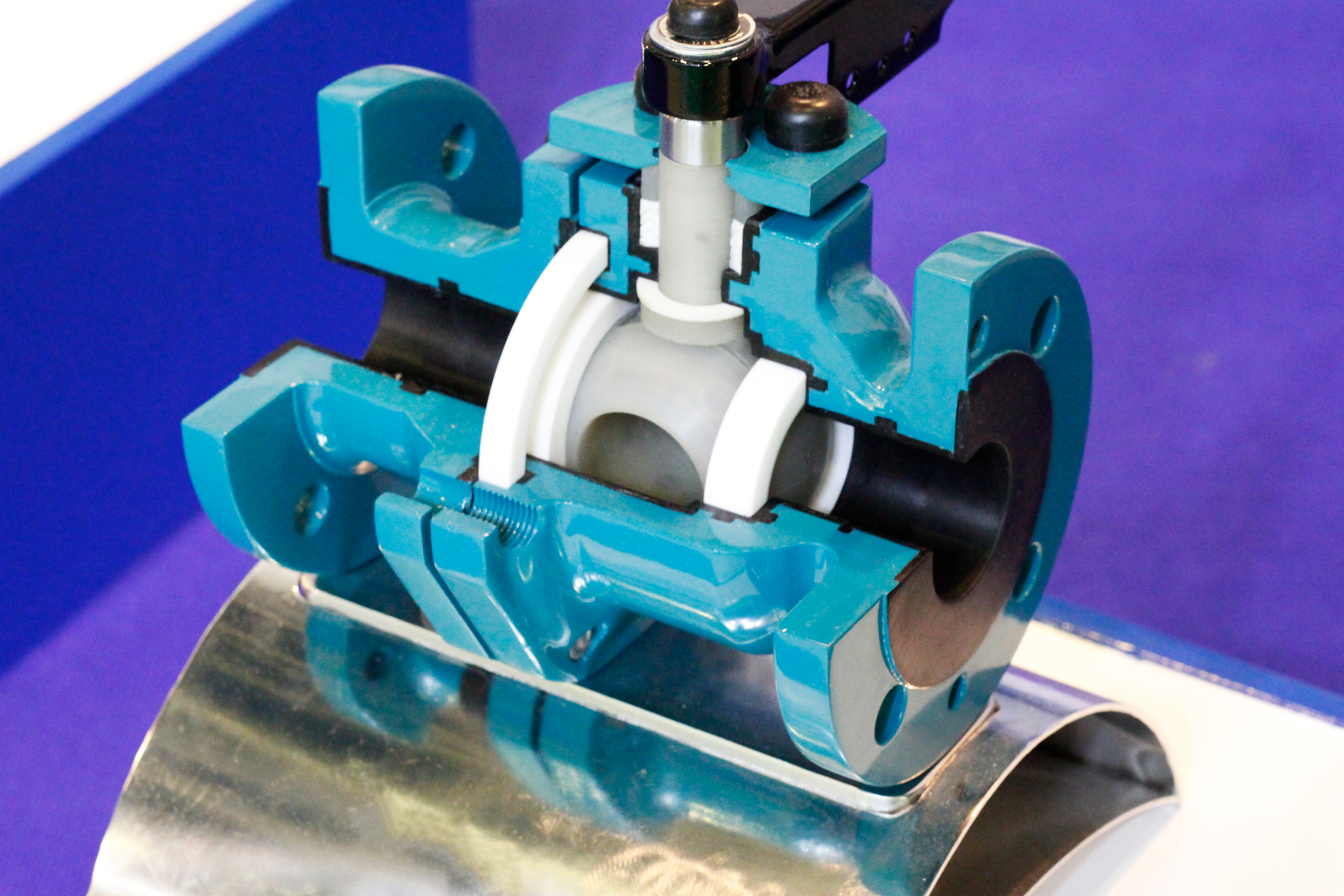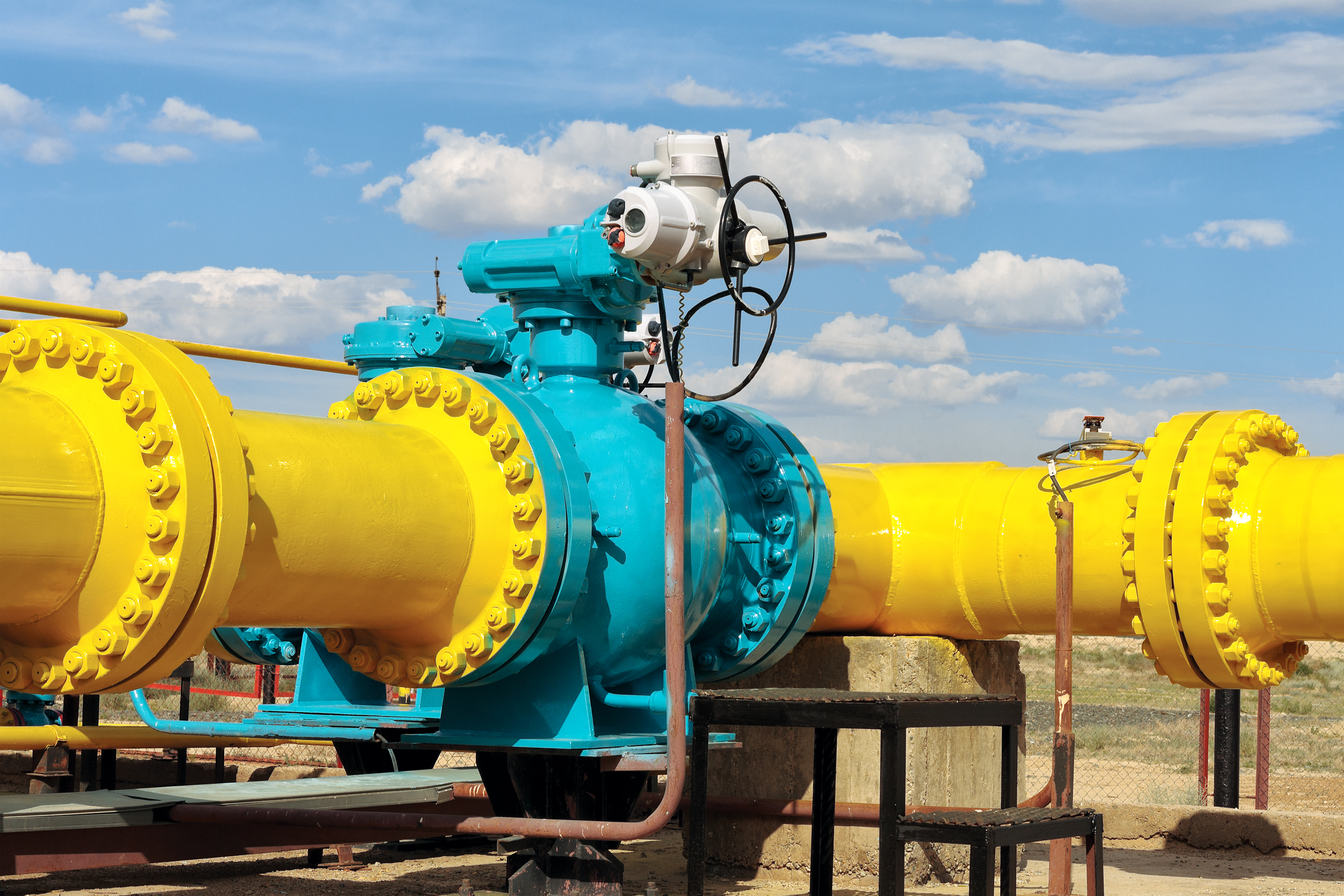Bar Shower Valve
3 way control valve
high pressure ball valves
electric valve actuator
Ball valves are versatile flow control devices suitable for extensive industrial applications. They are available in different sizes and designs, making them adaptable to diverse sanitary, petrochemical, and cryogenic applications.
These valves control the flow of fluids through a hollow, pivoting ball that is either a full or reduced port. The dimensions of full port valves are equal to the internal diameters of the adjacent pipelines. The dimension of a reduced port (standard port) valve diameter is one pipe size less than the internal size of the adjacent pipe. For example, a 1” reduced port valve will actually use a ball with a ¾” port diameter.
Ball valves have several advantages over other industrial valves, with the most notable being:
- They provide leak-tight seals.
- They can open and close quickly.
- They are more durable than most other industrial valves.
There are several ways to categorize valves. Each category or design determines the performance characteristics of the valve. The categories include:
- Valve design based on ball movement: Floating and trunnion mounted
- Port design: full port, standard, or V-port valve.
- Body style: single body, split, top-entry, 3-piece or welded body.

There are a few questions that industrial engineers must ask before choosing ball valves. Finding answers to these questions guides the experts through the challenging valve selection process and helps select reliable ball valves that satisfy the requirements of the piping system. What are these questions?
1. What type of media will flow through the ball valve?
The first question that the engineers must address is the type of fluid that passes through the pipeline. Is it a liquid, gas or semi-solid (slurry)? Understanding the physical and chemical characteristics of the fluid helps analyze its behavior as it flows past the valve. Understanding the nature of the service fluid is vital for making decisions about valve materials, port designs and valve sizes. For example, when choosing a gas ball valve we must take into account its performance and reliability issues when working with combustible gases, like hydrocarbons, liquified natural gas or chemical vapors.
2. Which actuation methods will you use?
Pipeline designers must specify the type of valve actuation that will complement flow control operations. There are piping systems that require frequent valve operation and high precision levels. Other flow operations require a one-off activation of the ball valve. When choosing ball valves, the designer needs to quantify the frequency of valve operations. They also need to evaluate the energy requirements and complexity of actuation technologies. The available actuation methods for ball valves include:
- Pneumatic actuation
- Electric actuation
- Manual operation
- Hydraulic actuation
Evaluate additional actuation options like spring return or double-acting actuators as well. Understand the impact of add-ons like limit switches or pilot valves on the reliability of valves.
In processes that demand fast cycle times, pneumatic actuation for ball valves seems to be the most suitable choice. Engineers can install manually-operated ball valves in strategic pipe locations to facilitate pipeline isolation for maintenance or inspection. These low-cycle valves require operation a few times a year.
3. What are the temperature and pressure ratings of the pipeline?
Specifying the pressure and temperature conditions of the service fluid and the working environment is critical when selecting ball valves. The temperature ranges of the service fluid can alter the mechanical strength of the valve. If the temperature fluctuations are too high, the valve experiences non-uniform expansion and contraction that may lead to surface fractures with time.
Ball valves should sustain the pressure of the service fluid. Exceeding the designed pressure limits affects sealing quality and can cause premature wear. Select a ball valve with temperature and pressure ratings equal or higher to the ratings of the pipeline.
4. What are the estimated annual cycles?
The frequency of valve cycling affects the durability of a ball valve. Engineers should estimate annual operating cycles to determine the durability of different ball valves in the piping system. Other factors like maintenance and media abrasion affect the reliability of valves throughout their lifecycle.
The designers should estimate life expectancy of ball valves before choosing the actuation mechanism. If properly specified, ball valves can survive several tens of thousands of operations without failure. After understanding the cycling requirements, the engineers may settle on pneumatically actuated valves that guarantee better durability and reliability than electrically actuated counterparts.
5. How do you intend to use the ball valve?
While there are different types and brands of ball valves in the market, each has a definite application area. For instance, a steel ball valve for a chemical processing facility may not meet the specifications for use in a sanitary application. Ball valves provide shut-off for pipelines and can also provide directional control of fluids. When making selections for application-specific valves, the designer should understand whether:
- The valve exclusively shuts off the flow.
- The valve switches flow between sources.
- Splits flow from one source to two different destinations (applies to 3-way ball valves).
Industrial applications operate under different pressure and temperature conditions. There are strict emission and leakage control requirements attached to diverse classes of ball valves. When selecting the ball valve, ensure that it meets minimum system requirements and regulatory specifications.

7. Which materials are used to manufacture the valve?
The type of valve materials comes down to the properties of the service fluid. When evaluating valve materials, engineers should verify:
- Compatibility with the service media
- Resistance to corrosion
- Cost
The most common materials for ball valve bodies are brass, stainless steel, plastic, Monel, Inconel, Molybdenum, Chromium alloys, nickel alloys or copper. Severe service ball valves require materials with better strength and corrosion resistance values like Monel or Inconel.
When examining valve materials, the designers should pay attention to the composition of seal materials. Soft-seated ball valves may use rubber seals or PTFE seals. For extreme fluid service, the ball valves feature metal-to-metal seats.
Which testing and quality assurance procedures does your valve vendor use?
When working with vendors or manufacturers, the company should request information about testing protocols and quality assurance measures that they use. Testing procedures analyze the performances of different ball valves, leak and emission tests and pressure tests to ensure valves are safe for specific applications.
Do not purchase ball valves because they are the cheapest in the market. Take an extra step to evaluate the quality assurance criteria and standardization marks on the valve body or packaging. There is no point in purchasing ball valves in bulk, only for them to fail after a few working cycles.
8. What certifications should the valve have?
The application of ball valves spans different industries. In each sector, appointed organizations certify products to verify compliance with health and safety regulations. Depending on the type of application, ball valves and their actuators are subject to the following certifications:
- ANSI certifications: Determines the pressure and temperature ratings for pipe flanges.
- NEMA certifications: Sets the standards for the design of electrically actuated ball valves.
- NSF certifications: Provide guidelines for selecting ball valves in food, beverage and drug production facilities.
Ball valves should have certifications relevant to the fluid applications you are running within the facility.
9. What are the maintenance requirements for ball valves?
Ball valves do not typically require a high volume of maintenance interventions. They have simple flow control mechanisms and are less likely to fail. However, that does not preempt the fact that industrial valves, at times, will require maintenance. When selecting valves, establish a plan for inspection and maintenance. Maintain a lean inventory of repair and replacement parts like seals for valves and consumables for actuators. Manual ball valves may require fewer maintenance interventions than actuated valves.
Conclusion
Selecting ball valves for different industrial applications is not a simple process. It requires a careful review of the technical specifications of the pipeline, a balanced selection of manufacturing materials, and research on the different valve industry codes and standards. By answering the above questions, engineers and pipeline designers can make informed decisions and select reliable ball valves that provide long-term service.



